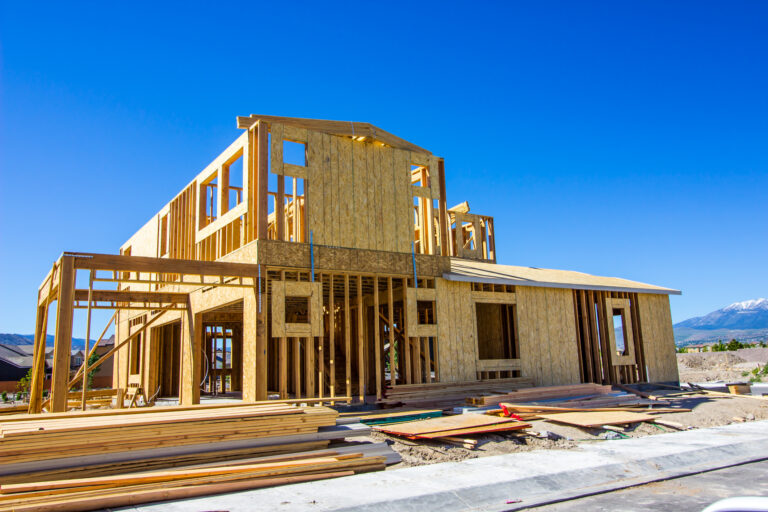Australian Property Update – September 2022

Terry’s View – Terry Ryder is Australia’s Leading Independent Property Researcher
All the core problems confronting the housing market can be blamed on politicians. Whether it’s the affordability issue, the rental shortage or builders going broke amid a construction boom, the short-sighted decisions of politicians are the underlying cause.
The previous Federal Government provided grants to encourage new home building but failed to consider whether there would be sufficient supplies of materials and tradespeople. The shortages that resulted have caused building costs to soar, sending many builders to the wall.
There are other reasons the cost of new homes is high. The cost of a new house-and-land package is loaded with taxes, fees and levies from all levels of government, which treat the housing industry as a cash cow. Up to 50% of the cost of a new home is government charges – and this underpins the affordability problem.
But now the biggest issue is the rental shortage crisis. This has evolved over the past five years as a result of federal and state government policies which have discouraged investors. The process continues, with several states implementing measures that will cause investors to sell, worsening the rental shortage.
Booms Historically Trump Downturns
Owners may worry the slowdown after Australia’s property boom will result in huge price drops, but new analysis has disproven this theory.
A Domain review of the housing market’s peaks and troughs over the past 30 years, finds in general the duration and steepness of an upswing is longer and greater than a downturn.
On average, during a boom Australian house prices rise by 33% from trough to peak over about 2.75 years.
During a downturn house prices, on average, drop only 3% from the point of peak to trough over the course of 0.75 years.
There have been four periods where house prices across the combined capitals declined annually in the past 30 years: 1995–1996, 2008–2009, 2011–2012 and 2018–2019.
During all four of these periods the annual drop in prices was less than 10% even though the rate of increase during the proceeding peak was more than 10%.
Domain chief of research and economics, Dr Nicola Powell, says the results of the analysis should give owners confidence in the current market.
“When property prices fall it can understandably make many Australians feel uncertain about their property journey, however, it is important to remember that property has historically moved through upswings and downturns, and there are lessons that can be learnt from previous price cycles,” she says.
She says when the Australian market moves into its recovery phase it will affect premium price point markets first.
Housing: Investment Of The Year
Rental growth in all Australian capital cities is increasing at double the annualised inflation rate.
SQM Research data shows the national average rental increase in the past 12 months is 14% – well ahead of annual inflation of 6.1%.
In some locations it is up to triple the inflation rate, including Sydney and Brisbane where house rents are up 20% and Melbourne where unit rents are up 19%.
AMP chief economist Shane Oliver says he can’t remember a time when rents were rising so quickly. “I think you would have to go back to the 1970s,” he says.
Real Estate Institute of NSW CEO Tim McKibbin says the significant lack of supply is having a big impact on the rental market.
Analysts say rent rises are not unexpected as the market was suppressed for extended periods during the pandemic, as a result of emergency moratoriums which also banned evicting tenants.
Banking regulators also introduced macroprudential limits which cut off investment lending activity among the major banks leading to a shortage of investors and therefore rental properties.
With building approvals dropping on the back of increased construction costs and uncertainty, many are predicting no major changes to rental supply levels in the near term.
Leading Developers Reveal Outlook
Leading residential developers Mirvac and Stockland are pushing ahead to deliver thousands of apartments to meet growing demand.
Mirvac will develop 900 apartments this year according to chief executive Susan Lloyd-Hurwitz.
She says the east coast housing market is “increasingly undersupplied” and it will launch projects in Brisbane, Melbourne and Sydney, delivering more than it did in 2021.
It will also develop 2,000 lots in greenfield master-planned communities.
“Our apartment projects are expected to complete into an under-supplied market, positioning us well to capture demand,” she says. “Our brand, focus on owner-occupiers, diversity of product and reputation for quality will help us to remain resilient in a rising interest rate environment.”
Stockland is on track to settle the same number of lots in its land estates this financial year as it did during the boom.
Chief executive Tarun Gupta believes the South-East Queensland market will remain strong as a result of interstate migration.
“We’ve got immigration starting to pick up, more migrants arriving and there is a lot of disposable income that seems to be in consumers hands,” Gupta says. “Those are all strong fundamentals. And there is really no big oversupply either in the apartments market or the land subdivision market.”
Borrowers Warned Loyalty Will Cost Them
Borrowers who remain loyal to lenders could pay thousands of dollars more a year than they need to, according to a review of major bank lending rates.
RateCity is warning homeowners not to fall victim to a “mortgage loyalty tax” by staying with current lenders, who are offering new borrowers better deals than existing customers.
The financial comparison site found all four major banks are offering new customers a significantly lower variable rate than existing customers.
It found a borrower who took out a variable rate loan in September 2019 could be paying an interest rate which is almost a full percentage point higher than a new customer today.
It estimates a Commonwealth Bank customer taking out a $500,000 loan three years ago would have paid an extra $5,100 in interest if they had not negotiated a better rate with the bank because during that time the bank offered discounts five times to new customers.
While the major banks have passed on the new rate rises to existing customers since May they are still offering discounts to bring in new business.
RateCity research director Sally Tindall says banks are “falling over themselves” to offer discounts and perks to borrowers willing to move from a competitor.




